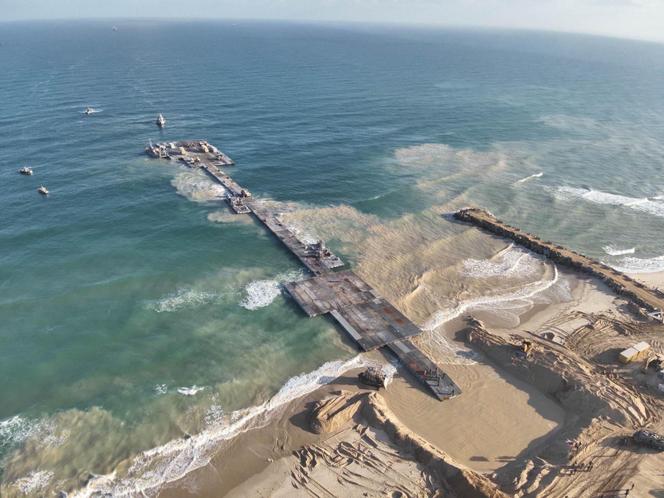


After three months of preparation, on Friday, May 17, the US military delivered its first load of food to the floating pier it has completed on the Gaza coast. It was fulfilling a commitment made in March by President Joe Biden, shortly after the so-called "flour massacre," in which the Israeli army improvised a food convoy in the besieged north of Gaza, without coordinating with humanitarian organizations, and fired on a crowd of starving Palestinians storming the trucks.
Washington's maritime initiative was an admission of impotence: The United States had failed to force its Israeli ally to open its borders sufficiently to international aid, in order to prevent the outbreak of famine in Gaza. Three months later, the United Nations has officially declared a full-fledged famine in the north of the enclave, the borders have never been so hermetically sealed since January, and the pier was being made operational before the eyes of disillusioned aid workers.
"This operation is a smokescreen, a distraction. Although the aid is welcome, it cannot compensate for what Israel is holding back at the borders," noted a senior UN official, speaking on condition of anonymity, even before this first delivery. Biden said on X on Friday that "our work with Israel to further increase the amount of aid getting into Gaza by land continues."
The World Food Program, the UN body that works most closely with the American and Israeli authorities, transported this first symbolic shipment to its warehouses in Deir al-Balah, in the center of the enclave, without incident – nutrient-rich bars, therapeutic rations, water and hygiene kits. Other UN organizations were expected to help distribute the supplies. The UN was hoping for short delays at army checkpoints in the enclave, as the aid has already been inspected by the Israel at its point of departure in Cyprus.
At full capacity, the sea route can carry the equivalent of 150 truckloads of food a day – less than a third of what entered Gaza before the war, and a 10th of what the UN estimates is needed to begin to alleviate the hunger and health emergency that has gripped Gaza over recent months. This is a far cry from the promise to "flood" Gaza with food, repeated by Washington and the Israeli government in March. The pier is only operational when the sea is calm, and is scheduled to be dismantled at the end of the summer season in September.
What seems to be more permanent, however, are the military installations that Israel has set up around the pier to secure its surroundings. The army has made this "an absolute priority," as Washington insists that no American soldier will land on the coast. Israel has integrated the pier at the exit of a militarized road, lined with outposts and observation centers, which splits the enclave down the middle and keeps northern Gaza largely cut off from the world. This is Israel's main point of entry and control in the enclave in the long term, from where the army conducts its raids in the northern Zeitoun and Jabalia districts.
You have 45.76% of this article left to read. The rest is for subscribers only.
